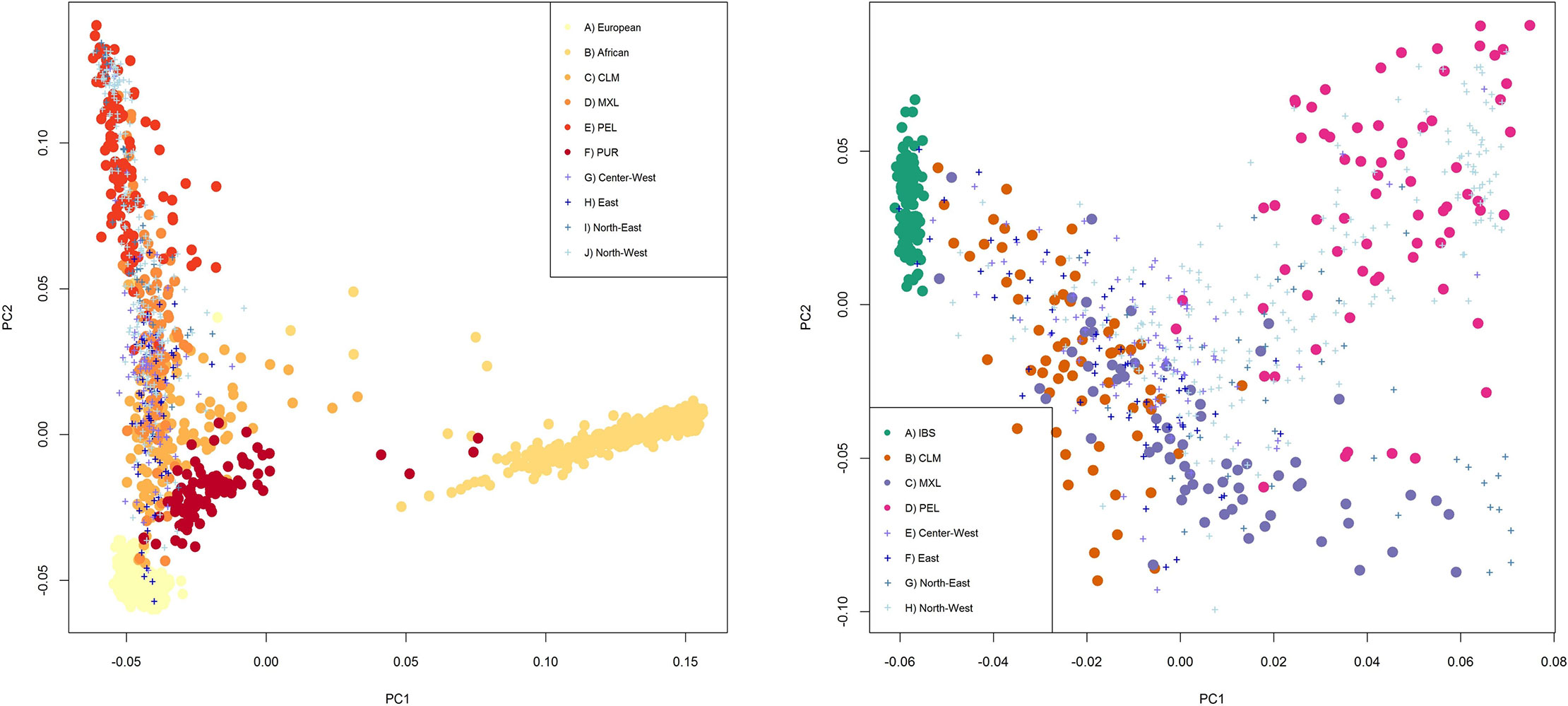Open access Population structure in Argentina, by Muzzio et al., PLOS One (2018).
Abstract (emphasis mine):
We analyzed 391 samples from 12 Argentinian populations from the Center-West, East and North-West regions with the Illumina Human Exome Beadchip v1.0 (HumanExome-12v1-A). We did Principal Components analysis to infer patterns of populational divergence and migrations. We identified proportions and patterns of European, African and Native American ancestry and found a correlation between distance to Buenos Aires and proportion of Native American ancestry, where the highest proportion corresponds to the Northernmost populations, which is also the furthest from the Argentinian capital. Most of the European sources are from a South European origin, matching historical records, and we see two different Native American components, one that spreads all over Argentina and another specifically Andean. The highest percentages of African ancestry were in the Center West of Argentina, where the old trade routes took the slaves from Buenos Aires to Chile and Peru. Subcontinentaly, sources of this African component are represented by both West Africa and groups influenced by the Bantu expansion, the second slightly higher than the first, unlike North America and the Caribbean, where the main source is West Africa. This is reasonable, considering that a large proportion of the ships arriving at the Southern Hemisphere came from Mozambique, Loango and Angola.

On the x axis is PC 1 while PC2 is the y axis. Plus symbols represent Argentinian samples and circles are for reference panels. Fig 2a (left) Argentinians with YRI and LWK for African references (“African”), IBS and TSI for European references (“European”) and the PEL, MXL, PUR and CLM as a Latin American references. Fig 2b (right) samples from Argentina with IBS, MXL, CLM and PEL.
Related:
- Latin Americans show widespread Mediterranean and North African ancestry
- Patterns of genetic differentiation and the footprints of historical migrations in the Iberian Peninsula
- Ancient Patagonian genomes suggest origin and diversification of late maritime hunter-gatherers
- Ancient DNA reveals temporal population structure of pre-Incan and Incan periods in South‐Central Andes area
- Paternal lineages mainly from migrants, maternal lineages mainly from local populations in Argentina